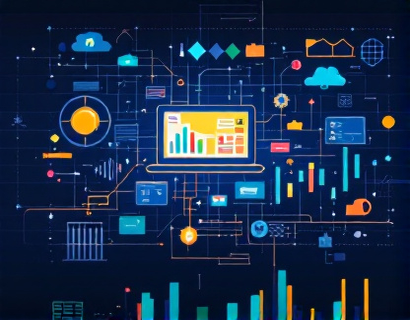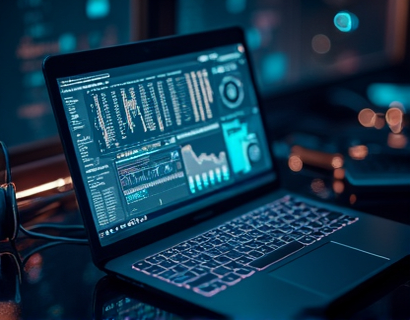Maximizing Digital Asset Security: Innovative Software for Robust and Flexible Self-Custody Management Solutions
In the rapidly evolving landscape of digital assets, ensuring the security and management of these valuable resources has become paramount for both businesses and individuals. The rise of cryptocurrencies, non-fungible tokens (NFTs), and other digital assets has led to an increased need for secure and flexible self-custody solutions. This article delves into the innovative software solutions designed to empower users with robust self-custody management systems, simplifying complex arrangements and enhancing the overall security of digital assets.
Understanding Digital Asset Security
Digital asset security encompasses a range of practices and technologies aimed at protecting digital assets from unauthorized access, theft, and loss. Unlike traditional assets, digital assets exist solely in the digital realm, making them vulnerable to cyber threats such as hacking, phishing, and malware. The decentralized nature of many digital assets, particularly cryptocurrencies, adds another layer of complexity to security measures. Self-custody, where individuals or businesses manage their own private keys, is often preferred for its enhanced control and security compared to third-party custodial services.
Challenges in Self-Custody Management
While self-custody offers greater control, it also places the responsibility of security squarely on the user. This can be daunting for those unfamiliar with the technical aspects of digital asset management. Key challenges include:
- Technical complexity: Understanding and implementing secure practices requires knowledge of cryptography, software security, and best practices.
- Key management: Losing private keys can result in permanent loss of access to digital assets, making secure key storage and recovery crucial.
- Security threats: The risk of cyber attacks, social engineering, and physical theft remains a constant concern.
- Regulatory compliance: Navigating the evolving regulatory landscape can be challenging, especially for businesses.
These challenges highlight the need for advanced software solutions that can simplify and enhance the security of self-custody management.
Innovative Software Solutions for Self-Custody
Recent advancements in software technology have led to the development of sophisticated tools designed to address the challenges of self-custody management. These solutions offer a combination of security features, user-friendly interfaces, and flexible customization options to cater to diverse user needs.
Comprehensive Security Features
One of the primary focuses of these innovative software solutions is to provide robust security features. Key components include:
- Hardware security modules (HSMs): These physical devices securely store private keys and perform cryptographic operations, reducing the risk of key exposure.
- Multi-factor authentication (MFA): Adding multiple layers of verification to access digital assets, making unauthorized access significantly more difficult.
- Encryption: Advanced encryption techniques protect data both at rest and in transit, ensuring that even if data is intercepted, it remains unreadable.
- Regular security audits and updates: Continuous monitoring and updating of security protocols to address new threats and vulnerabilities.
User-Friendly Interfaces
To make self-custody more accessible, innovative software solutions prioritize user-friendly interfaces. These features include:
- Intuitive dashboards: Clear and concise displays of asset holdings, transaction history, and security status.
- Step-by-step guides: Detailed instructions for setting up and managing self-custody, reducing the learning curve for new users.
- Customizable alerts: Notifications for important events such as low balance warnings, transaction confirmations, and security breaches.
- Integration with wallets and exchanges: Seamless connectivity with popular digital asset platforms to simplify asset management.
Flexible Customization Options
No two users have the same needs, which is why flexible customization is a critical aspect of modern self-custody software. These solutions offer:
- Customizable wallet settings: Users can tailor wallet parameters to suit their specific requirements, such as transaction fees, block times, and network preferences.
- Scripting and automation: Advanced users can write custom scripts to automate repetitive tasks, enhancing efficiency and reducing manual errors.
- Multi-asset support: Ability to manage various types of digital assets within a single platform, from cryptocurrencies to NFTs.
- Backup and recovery options: Flexible methods for backing up private keys and wallet data, ensuring recovery in case of loss or device failure.
Advanced Risk Management Tools
Effective risk management is essential for maintaining the integrity and security of digital assets. Innovative software solutions provide advanced tools to help users identify and mitigate risks:
- Risk assessment analytics: Data-driven insights to evaluate potential vulnerabilities and suggest improvements.
- Security breach detection: Real-time monitoring for suspicious activities and immediate alerts to potential threats.
- Compliance tracking: Tools to ensure adherence to regulatory requirements, reducing legal risks.
- Insurance integration: Options to connect with insurance providers for coverage against losses, providing an additional layer of protection.
Case Studies and Real-World Applications
To illustrate the effectiveness of these innovative software solutions, consider a few real-world applications:
Case Study 1: Business Inventory Management
A mid-sized business specializing in digital art wanted to manage its collection of NFTs securely. They implemented a self-custody solution with hardware security modules and multi-factor authentication. The software's customizable wallet settings allowed them to optimize transaction fees and block times for their specific needs. The integrated risk management tools provided real-time alerts and compliance tracking, ensuring they remained compliant with art market regulations. As a result, the business experienced a significant reduction in security incidents and improved operational efficiency.
Case Study 2: Individual Investor
An individual investor with a diverse portfolio of cryptocurrencies and tokens sought a user-friendly self-custody solution. The software's intuitive dashboard and step-by-step guides made it easy for them to set up and manage their assets. Customizable alerts kept them informed about market movements and security events. The ability to backup and recover their wallet data provided peace of mind, knowing they could restore access in case of device loss. The platform's flexibility allowed them to experiment with different strategies without compromising security.
Future Trends in Digital Asset Security Software
The landscape of digital asset security software is continually evolving, driven by advancements in technology and the increasing sophistication of cyber threats. Some key trends to watch include:
Integration with Decentralized Finance (DeFi)
As DeFi continues to grow, self-custody solutions are integrating with DeFi platforms to provide seamless management of assets across decentralized protocols. This integration enhances security and convenience, allowing users to manage their DeFi positions alongside their traditional digital assets.
Artificial Intelligence and Machine Learning
AI and ML are being leveraged to enhance risk detection and management. These technologies can analyze vast amounts of data to identify patterns and predict potential threats, enabling proactive security measures. AI-powered chatbots and virtual assistants are also improving user experience by providing real-time support and guidance.
Biometric Authentication
Biometric authentication methods, such as fingerprint and facial recognition, are being incorporated into self-custody software to provide an additional layer of security. These methods offer a balance between convenience and security, reducing the reliance on traditional password-based systems.
Cross-Platform Compatibility
Future software solutions will focus on cross-platform compatibility, ensuring users can manage their assets across different devices and operating systems without compromising security. This will be crucial as more users adopt mobile and web-based solutions for their digital asset management.
Conclusion
In the world of digital assets, security and management are paramount. Innovative software solutions are transforming the way businesses and individuals approach self-custody, offering robust, flexible, and user-friendly options. By leveraging advanced security features, intuitive interfaces, and customizable settings, these tools empower users to manage their digital assets with confidence. As the landscape continues to evolve, staying informed about the latest trends and technologies will be essential for maintaining the highest levels of security and efficiency.










































